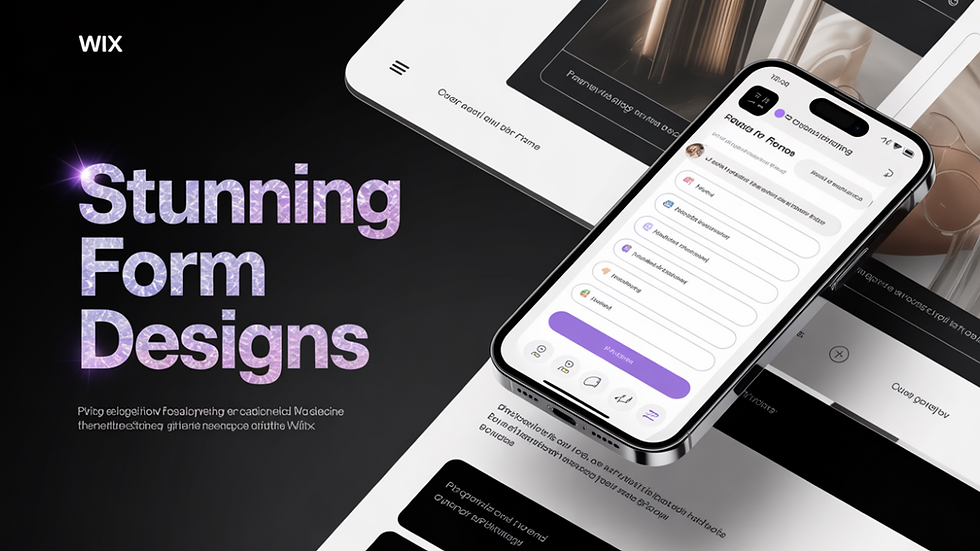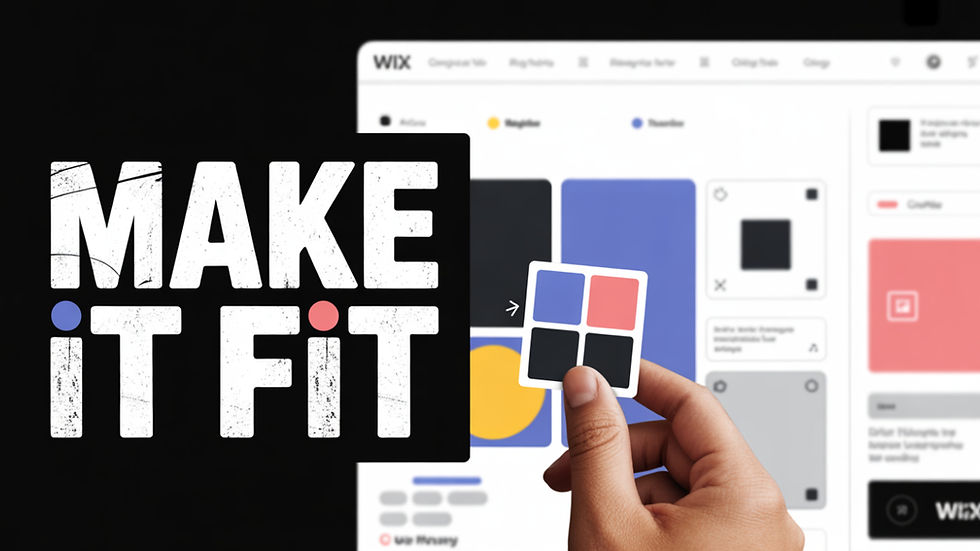What Is Image Optimization & Why It's Essential For Your Website
- Marina Lotaif
- Aug 15, 2022
- 4 min read

According to 2018 data from Jumpshot, over 20% of all U.S. web searches are conducted on Google Images. Additionally, research shows that 65% of the population are visual seekers and learners.
Nowadays, people find it more convenient to search up their favorite products through visuals rather than scrolling pages of Google search results. They simply want easy access to the material they are looking for!
Visual content is also necessary for maintaining user engagement. They bring your content to life and attract visitors. In return, this increases website traffic and, ultimately, conversions.
However, employing un-optimized images can only lead to adverse effects. Whether you are a blogger, an eCommerce entrepreneur, or write articles for an online magazine - optimized images are crucial for your site's performance.
What is Image Optimization?
Image optimization delivers high-quality web images in the appropriate format, dimension, and resolution while keeping their size as compressed as possible. Image optimization involves several steps, but two essential factors are:
Resizing or Compression: The aim is to reduce the size of an image to as small as possible without losing its quality.
Caching: Store your image files within a browser's cache to reduce page load times.
Importance of Image Optimization
Now that I have given a brief look into what image optimization is, let's look at why the practice is necessary for your website.
1. Improves Page Load Speeds
Images are heavy in terms of size. They can drastically slow down your website's load speed without proper optimization. Hence, ensuring your page loads quickly is necessary for a better user experience and overall website performance.
Page speed depends on many factors, such as website layout, design, and images. However, images are the heaviest element and can account for 75% of the weight of a webpage if left unoptimized. Therefore, you need to optimize all images on your websites to produce a significant change in loading speeds.
There are lots of tools to check the speed of website. Some notable ones include:
PageSpeed Insights by Google
2. Better User Experience
Similarly, a page's speed is vital to a visitor's experience. Users despise waiting, and you could lose your audience if you don't take preventive measures. They want "instant" results, and delays of even one second are enough to interrupt a person's thought process.
Another way you can improve a user's experience is by adding a proper title and alt text, which significantly improves the experience of visually impaired visitors. Moreover, these help search engines understand your image and generate higher rankings.
Am improved user experience will also result in better engagement and conversions. Remember, a user will spend more time on your site if it is responsive, snappy, and has valuable optimized images.
3. Images Contribute to SEO
In 2010, Google clarified that page load speed is a vital ranking factor. The picture's format, title, alt text, and a lot more go into image SEO and give your images a chance of performing better in search engine rankings.
Image search represents 27% of all queries generated across the top 10 U.S. web search properties. This might sound surprising, but today 62% of Gen Z and millennial consumers demand visual search.
Un-optimized images can lead to adverse effects on SEO. Who doesn't want to see their webpage on top of the search rankings? Hence, you should put your time and effort into optimizing your images correctly.
4. Boost Conversions
Higher search engine ranking directly involves capturing more users and possibly more conversions. If your website is regularly and properly optimized, your audience will gain trust in your brand and will surely boost your conversion rate.
Optimized images are a great way to grab consumers' attention by presenting high-quality images that feature a product's attributes. This will not only influence a customer's buying decision but will also help in conversion rates.
5. Save Server Memory & Reduce The Load
Lastly, image optimization helps save memory and reduce a server's load. Large images consume storage space and demand increased bandwidth for transferring files to a user's web browser.
Optimized images save almost 50% of the server load more than un-optimized images. They also reduce bandwidth and server costs. For instance, if you have two identical photos, one is 900 kb, and the other is 340 kb in size. The second image will then put low weight on the server and save you bandwidth.
With the proper techniques, website owners can significantly reduce the amount of disk space and bandwidth needed to show and store their images.
Best Image Optimization Practices:
Images have been proven to be a driving factor that connects an audience with your work. Although optimizing images include several factors, the most vital practices include:
Writing Proper Names - Using default file names is not a good choice. Instead, you can name your image according to what it offers.
Proper Formatting and Dimensions - Familiarize yourself with different formats and choose what makes your content shine. Secondly, choose the appropriate dimensions to match the layout of your overall website.
Using High-Quality Photos - The right images enhance the aesthetic appeal of your content and increase your brand's trustworthiness. Several prominent stock image providers contain thousands of free and affordable licensed images for different purposes. So choose what's best for you and your audience. But make sure they resonate with whatever you are offering. Otherwise, you may end up confusing them. And don’t forget to reduce the image sizes as large pictures can slow down your page loading time.
Conclusion
Having a website means you will have to update and improve it regularly. Optimized images are essential for building a successful website. Well-written content, optimized, and high-quality images drive traffic back to your site and build your brand's authority online.
People buy with their eyes, and if you want to make your business stand out and be noticed, you have to leverage the power of images with your content. They are vital for accessibility, SEO, and conversion, as well as for making your piece of work look nice.
So, feel free to use optimized images to give your website a little more personality and color!
Guest Post by Ivy Attie



LAPAKBET777LOGIN
ALTERNATIFLAPAKBET
LAPAKBET777DAFTAR
LAPAKBET777OFFICIALL
LAPAKBET777RTP
I recently discovered Khelo24 and was genuinely impressed by its wide selection of games and user-friendly interface. Whether you're a casual gamer or a competitive player, khelo24 login provides a secure and enjoyable platform for online gaming. With fast payouts and a responsive support team, the overall experience is smooth and reliable. Definitely worth checking out!
Team Khelo24 https://www.khelo24.co.in/
google 优化…
무료카지노 무료카지노;
Fortune Tiger…
Fortune Tiger…
Fortune Tiger…
Fortune Tiger…
gamesimes gamesimes;
站群/ 站群
03topgame 03topgame
betwin betwin;
777 777;
slots slots;
Fortune Tiger…
谷歌seo优化 谷歌SEO优化+外链发布+权重提升;
google 优化…
무료카지노 무료카지노;
Fortune Tiger…
Fortune Tiger…
Fortune Tiger…
Fortune Tiger…
gamesimes gamesimes;
站群/ 站群
03topgame 03topgame
betwin betwin;
777 777;
slots slots;
Fortune Tiger…
谷歌seo优化 谷歌SEO优化+外链发布+权重提升;
google 优化 seo技术+jingcheng-seo.com+秒收录;
Fortune Tiger Fortune Tiger;
Fortune Tiger Fortune Tiger;
Fortune Tiger Fortune Tiger;
Fortune Tiger Slots Fortune…
站群/ 站群
gamesimes gamesimes;
03topgame 03topgame
EPS Machine EPS Cutting…
EPS Machine EPS and…
EPP Machine EPP Shape…
Fortune Tiger Fortune Tiger;
EPS Machine EPS and…
betwin betwin;
777 777;
slots slots;
Fortune Tiger Fortune Tiger;